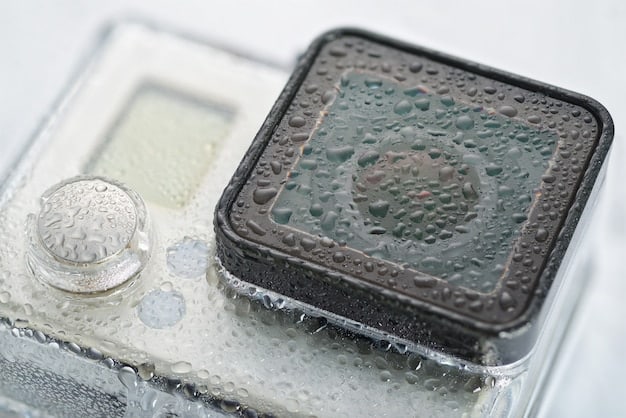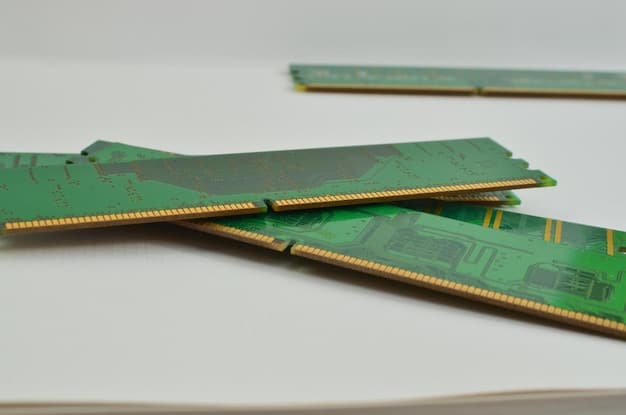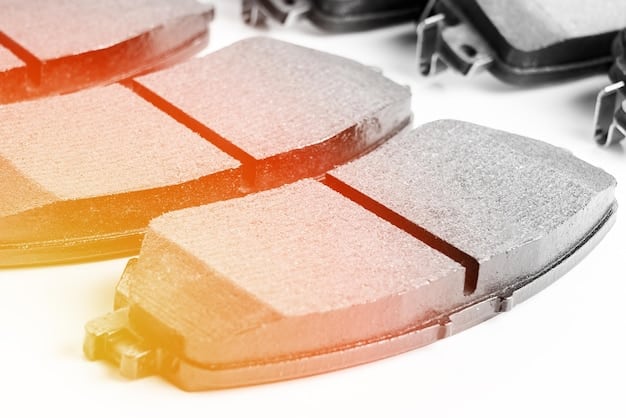Thermal Paste: Application Techniques for Lower CPU Temps

The truth about thermal paste is that proper application is crucial for optimal CPU cooling; applying the correct technique can lower temperatures by up to 5 degrees Celsius, enhancing PC performance and stability.
Many PC builders underestimate the impact of thermal paste, but the truth is that proper application can significantly affect CPU temperatures. Learn the best thermal paste application techniques that can lower temps by 5 degrees and boost your PC’s performance.
Understanding Thermal Paste: Why It Matters
Thermal paste, also known as thermal grease or heat sink compound, acts as a crucial interface between your CPU (Central Processing Unit) and the cooler. It fills microscopic air gaps that would otherwise impede heat transfer, making it an essential component for maintaining optimal operating temperatures.
Without effective thermal paste application, your CPU can overheat, leading to reduced performance, system instability, and even permanent damage. Understanding the role of thermal paste is the first step in ensuring your PC runs efficiently and reliably.

The Impact of Application Techniques on CPU Temperatures
The way you apply thermal paste directly impacts its effectiveness. Different application methods result in varying degrees of coverage and contact between the CPU and cooler, leading to noticeable differences in temperature.
Applying too much paste can act as an insulator, hindering heat transfer, while applying too little leaves gaps that reduce contact efficiency. The goal is to achieve a thin, even layer that maximizes heat dissipation.
Common Application Mistakes to Avoid
- Applying Too Much Paste: Excess paste can spread beyond the CPU and onto the motherboard, potentially causing short circuits or acting as an insulator.
- Applying Too Little Paste: Insufficient paste leaves gaps, reducing the contact area between the CPU and cooler, leading to inefficient heat transfer.
- Using Old or Dried-Out Paste: Expired or hardened paste loses its thermal conductivity, negating its purpose.
- Uneven Application: An unevenly applied layer results in inconsistent contact and hotspots, leading to temperature spikes.
Avoiding these common mistakes is crucial for achieving optimal cooling performance and preventing potential hardware issues.
Recommended Thermal Paste Application Techniques
Several thermal paste application techniques are widely used in the PC building community. Each method has its pros and cons, and the best choice often depends on personal preference and the specific configuration of your CPU and cooler.
Here are some of the most popular and effective techniques for applying thermal paste:
The Dot Method
- Description: Applying a small dot (about the size of a grain of rice or a pea) in the center of the CPU.
- Pros: Simple, easy to execute, and generally effective for most CPUs.
- Cons: May not provide optimal coverage for larger CPUs or heat spreaders.
The Line Method
- Description: Applying a thin line of thermal paste down the center of the CPU, parallel to the longer side.
- Pros: Suitable for CPUs with a rectangular shape and provides good coverage.
- Cons: Requires more precision and can be messy if too much paste is applied.
The X Method
- Description: Applying a thin line of thermal paste diagonally from one corner to the opposite corner, forming an “X” shape.
- Pros: Ensures coverage in all four corners of the CPU.
- Cons: Can be wasteful if too much paste is used, and may not be ideal for CPUs with a smaller surface area.
Choosing the right technique depends on your specific CPU and cooler setup, but proper execution is key to achieving optimal results.
Step-by-Step Guide to Applying Thermal Paste
Regardless of the application technique you choose, following a consistent and careful procedure is essential for achieving optimal results. Here’s a step-by-step guide that outlines the process:
- Prepare Your Work Area: Ensure your workspace is clean, well-lit, and free of static electricity.
- Gather Your Supplies: You’ll need thermal paste, isopropyl alcohol, lint-free cloths, and possibly a thermal paste spreader.
- Clean the CPU and Cooler: Use isopropyl alcohol and a lint-free cloth to remove any old thermal paste or residue from both the CPU and the cooler.
- Apply the Thermal Paste: Apply the thermal paste using your chosen technique (dot, line, or X method). Remember, less is often more.
- Install the Cooler: Carefully align the cooler with the CPU and gently press down to ensure even contact. Secure the cooler using the appropriate mounting hardware.
- Test Your System: Power on your PC and monitor CPU temperatures to ensure they are within acceptable limits.
Following these steps carefully will help you achieve optimal thermal paste application and ensure your CPU stays cool under pressure.
Thermal Paste Types and Their Performance
Not all thermal pastes are created equal. Different formulations offer varying levels of thermal conductivity and performance. Understanding the different types of thermal paste can help you make an informed decision based on your budget and cooling requirements.
The market offers different types of thermal pastes, including:
Silicone-Based Thermal Paste
Silicone-based thermal paste is the most common and affordable option. It offers decent thermal conductivity and is suitable for most general-purpose applications.

Ceramic-Based Thermal Paste
Ceramic-based thermal paste offers slightly better thermal conductivity than silicone-based options. It’s a good middle-ground choice for those seeking improved performance without breaking the bank.
Metal-Based Thermal Paste
Metal-based thermal paste, often containing silver or aluminum particles, provides excellent thermal conductivity. It’s a popular choice for enthusiasts and overclockers seeking maximum cooling performance.
Liquid Metal Thermal Paste
Liquid metal thermal paste offers the highest thermal conductivity of all options. However, it’s also electrically conductive and can be dangerous if not applied carefully. It’s recommended for advanced users only.
Choosing the right thermal paste depends on your specific needs and expertise. Consider your budget, cooling requirements, and comfort level with handling potentially hazardous materials.
Troubleshooting High CPU Temperatures After Applying Thermal Paste
Even with proper application techniques and high-quality thermal paste, you might still encounter high CPU temperatures. Troubleshooting these issues involves identifying potential causes and implementing corrective measures.
Here are some common troubleshooting steps to consider:
- Check Cooler Installation: Ensure the cooler is properly seated and secured to the CPU. Loose or improperly installed coolers can lead to poor contact and high temperatures.
- Verify Fan Speed: Ensure the cooler’s fan is spinning at the correct speed. Check your BIOS or fan control software to adjust fan curves and optimize cooling performance.
- Monitor Ambient Temperature: High ambient temperatures can impact cooling performance. Ensure your PC is located in a well-ventilated area and avoid direct sunlight.
- Reapply Thermal Paste: If temperatures remain high after checking the above factors, consider reapplying the thermal paste. Ensure you clean the CPU and cooler thoroughly before applying a fresh layer.
By systematically troubleshooting potential issues, you can identify the cause of high CPU temperatures and implement effective solutions to ensure optimal cooling performance.
| Key Point | Brief Description |
|---|---|
| 🌡️ Application Matters | Proper thermal paste application lowers CPU temps. |
| ✅ Dot Method | Apply a small dot in the center of the CPU. |
| 🔧 Troubleshooting | Check cooler installation and fan speed if temps are high. |
| 💰 Paste Types | Silicone, ceramic, metal, liquid metal, each with varying performance. |
Thermal Paste FAQs
▼
It’s generally recommended to reapply thermal paste every 1-2 years, or whenever you remove or reinstall your CPU cooler. Over time, thermal paste can dry out and lose its effectiveness.
▼
Yes, applying too much thermal paste can actually hinder heat transfer. Excess paste can act as an insulator, trapping heat instead of dissipating it.
▼
The best way to clean off old thermal paste is with isopropyl alcohol (90% or higher) and a lint-free cloth. Gently wipe away the old paste until the surface is clean.
▼
Yes, the type of thermal paste can significantly impact cooling performance. Metal-based and liquid metal pastes generally offer better thermal conductivity than silicone or ceramic-based options.
▼
No, it’s important to use a lint-free cloth to clean the CPU. Regular cloths can leave behind fibers that interfere with thermal contact.
Conclusion
Mastering thermal paste application techniques is a critical aspect of PC building and maintenance. By understanding the importance of thermal paste, choosing the right application method, and following proper procedures, you can significantly improve your CPU’s cooling performance and ensure long-term system stability. Whether you’re a seasoned enthusiast or a first-time builder, optimizing your thermal paste application can lead to noticeable improvements in your PC’s overall performance and longevity.





